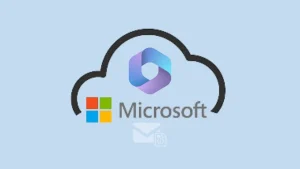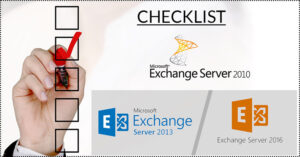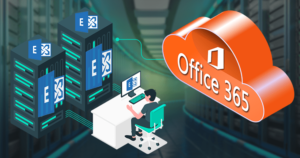Every Windows user has probably encountered ever with the terms Cmd (Command Prompt) and PowerShell. These two are robust tools in the Windows operating system. These tools provide users with commands that are directly sent to the system but vary in many ways. Cmd and PowerShell perform tasks, including managing files or documents, running scripts, etc. However, these have their strengths and weaknesses, which we are going to discuss in this blog.
Also, we will share the key differences between PowerShell and Cmd/Command Prompt of the Windows operating system. Let us start with a basic introduction to these two tools and briefly discuss Windows PowerShell vs. Command Prompt (Cmd).
What is Cmd (Command Prompt)?
Command Prompt/Cmd is the oldest tool in the Windows operating system. This tool is designed on the basis of MS-DOS, which was an old operating system before Windows became popular worldwide. Since its initial release in Dec 1987, the CMD has become an in-built tool in the Windows operating system.
Cmd is easy and fast and deals with only text-based commands to automate basic tasks on your systems. It is a basic command-line tool that allows users to engage with their PC by just typing commands.
Essential functions of the Cmd:
- (dir command): to list the content of the folder.
- (cd command): to navigate between folders.
- (.bat/batch files): to run simple scripts.
- (copy, move, del): to copy, move and delete files.
What is PowerShell?
PowerShell is an advanced tool that was introduced by Microsoft in 2006 to handle complex tasks that Cmd can’t perform efficiently. It gives users more flexibility and empowers them as it is built on the .NET framework. PowerShell not only deals with text-based commands but also works finely with object-based commands.
It is basically for the IT professionals and Administrators to handle many systems and manage repetitive tasks. PowerShell commands allow administrators to perform advanced tasks; they are not limited to simple tasks.
Essential functions of PowerShell:
- Cmdlets: Cmdlets are built-in commands that can manage various tasks, including handling services or getting detailed information about the PC.
- Object-Driven: PowerShell is object-driven and can manage data with ease. On the other hand, Cmd works only on text-based commands.
- Scripting: You can also use PowerShell to write scripts to automate administrative tasks on a large number of systems/PCs.
Significant differences between PowerShell and Cmd (Command Prompts)
This section will share the key differences between PowerShell and Cmd/Command Prompts. Here, we will look into the detailed features and learn the differences between Windows Command Prompt and PowerShell.
1. Command Structure in Cmd and PowerShell:
Cmd: The commands in Cmd are fundamental and used to process simple tasks. For example, you can use the “dir” command to list all files from a folder and “del” to delete files:
dir C:\Users
del C:\file.txt
PowerShell: The commands we use in PowerShell are called cmdlets. PowerShell commands are more powerful and are capable of handling complex tasks. They are more advanced and used in Verb-Noun format, including Get-Process, Set-Service, etc. For example:
Get-Process
Remove-Item C:\file.txt
2. Integration with Office 365 services:
Cmd: Cmd does not support interacting with Office 365 services, allowing users to process simple tasks only on their PC.
PowerShell: PowerShell smoothly integrates with Microsoft 365 services, including Active Directory, OneDrive, SharePoint, Exchange Online, Team Administrator, etc.
3. Text vs. Objects
Cmd: Cmd works with the simple text output. So, users always need to make extra effort to get filtered data only from the entire output.
PowerShell: PowerShell outputs commands in an object-oriented way so users can easily handle all the data. Let us take an example:
Running the Set-Services command will give you all the details about the services in an organized and structured manner. Afterward, you can easily filter or sort the data according to your needs.
4. Scripting Support:
Cmd: Cmd supports scripting and helps you to automate tasks using scripts. It only allows processing the .bat (batch files) script, which is the basic script and offers limited tasks.
PowerShell: PowerShell works with the PowerShell scripts (.ps1 files), which are more advanced and can handle a large number of tasks. You can include loops, functions, conditionals, and error-handling scripts using PowerShell. Moreover, it is also beneficial for manipulating complex tasks in simple ways.
Windows PowerShell vs Command Prompt: A Quick Comparison
This section will share a quick comparison between Windows PowerShell vs. Cmd (Command Prompt).
| Feature | Windows PowerShell | Cmd (Command Prompt) |
| Primary Use | Allows advanced scripting and automation tasks. | Only works with basic command-line for file handling. |
| Command Syntax | Cmdlets (e.g., Get-Process) | DOS commands (e.g., dir, del) |
| Object-Oriented | Yes, works with objects-oriented commands and can output objects. | No, works with simple text-based output only. |
| Pipelining | Supports object-based pipelining (passing objects). | Supports text-based pipelining (passing strings). |
| Scripting | Full-fledged scripting language with loops, conditions, and functions. | Limited scripting capabilities .bat (batch files). |
| Extensibility | Highly extensible with custom cmdlets and modules. | Less extensible, primarily limited to built-in commands. |
| Access to .NET Framework | Full access to .NET classes and libraries. | No access to .NET APIs |
| Cross-Platform Support | Available on Windows, Linux, and macOS (via PowerShell Core). | Works for only Windows OS. |
| Command History | More advanced history management, can recall commands with ease. | Basic command history support |
| Default Output | Objects, can format output to different views (tables, lists, etc.) | Plain text |
| Pipelines Support | Yes, supports complex pipelines with objects | Limited to simple pipelines with text |
| Access to Remote Systems | PowerShell Remoting, can manage remote computers | No built-in remote system management |
| Integration with Office 365 Services | Full integration with Office 365 services using Microsoft 365 modules (e.g., Connect-ExchangeOnline, Get-MsolUser) to manage users, groups, mailboxes, etc. | No direct integration with Office 365 services, limited to running external scripts or programs that access Office 365 services. |
This table lets you quickly understand the difference between PowerShell vs. Command Prompts (Cmd). Still, a few users want to know which (PowerShell or CMD) to use and when to use to handle or automate their tasks. Let us understand.
Which (PowerShell or Cmd) Should You Use and When Should You Use It?
When you should use Cmd or Command Prompt:
- To perform simple tasks, like running batch files, navigating files, etc.
- If you only want to use lightweight tools to manage administrative tasks, prefer Cmd.
- When you have just started and want to learn a simple command-line tool,
When you should run Windows PowerShell:
- Use PowerShell to automate complex tasks and handle a large number of systems.
- To interact with the Windows Registry, system services and processes, etc.
- If you need to work with the Object to filter or sort data and pipe outlook between the commands.
- Run PowerShell to write complex scripts for system administrators.
Final Thoughts
This blog has delivered detailed information on the Windows PowerShell vs. Command Prompt or Cmd. We hope you now understand when you should use PowerShell or Cmd to manage your tasks efficiently. Most importantly, make sure that you have a proper backup of your Office 365 data when running PowerShell for Office 365 services. For this, you can go for the Shoviv Office 365 Backup and Restore Tool; its free demo version is also available for trial and allows processing the first 50 items per folder into the target.
Popular Reads:
- How to Backup and Restore Emails in Webmail? - March 25, 2025
- How to Migrate Outlook to New Computer? - February 15, 2025
- Fix If Outlook Cannot Display the Specific Folder Location - February 1, 2025


